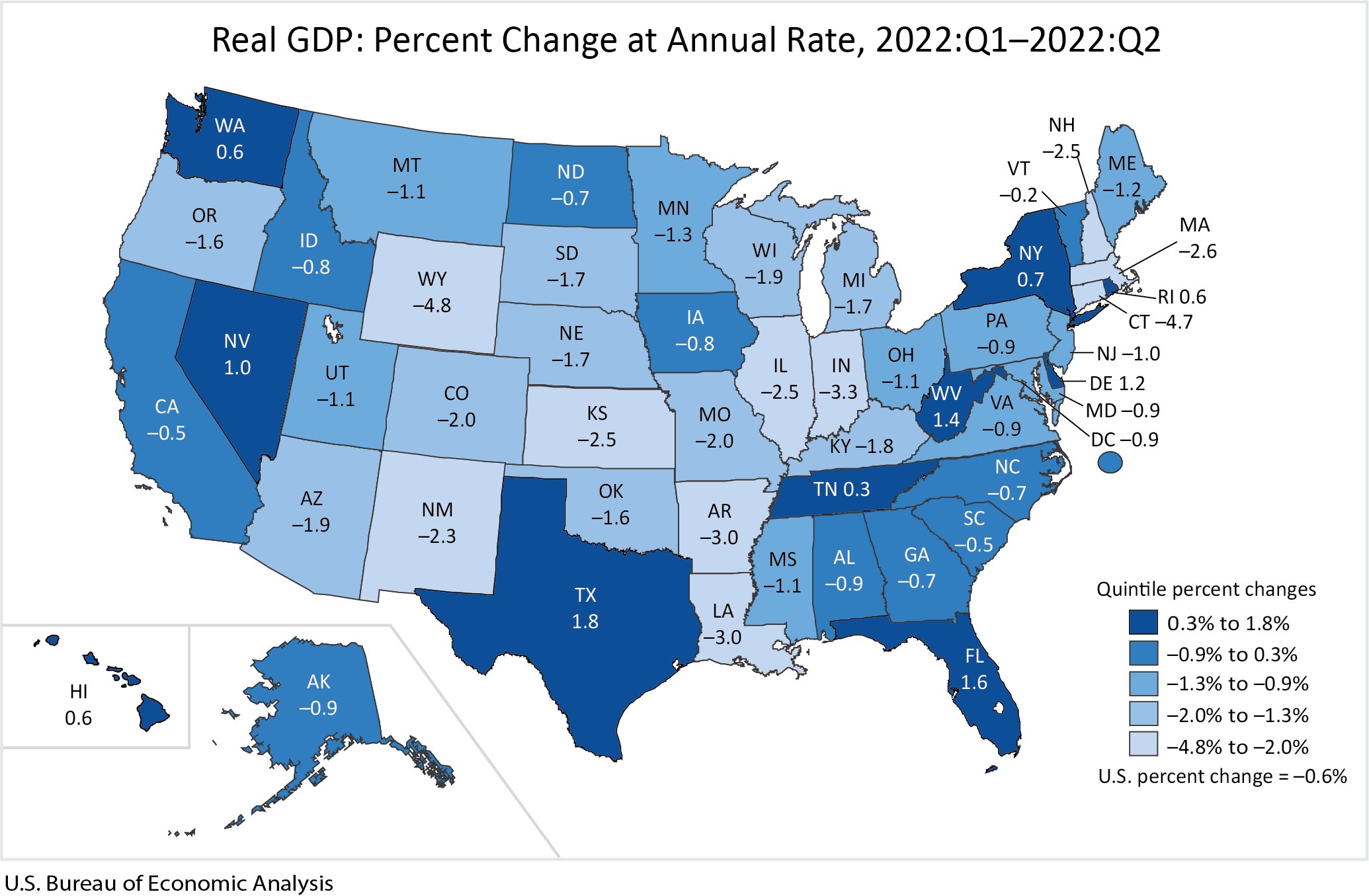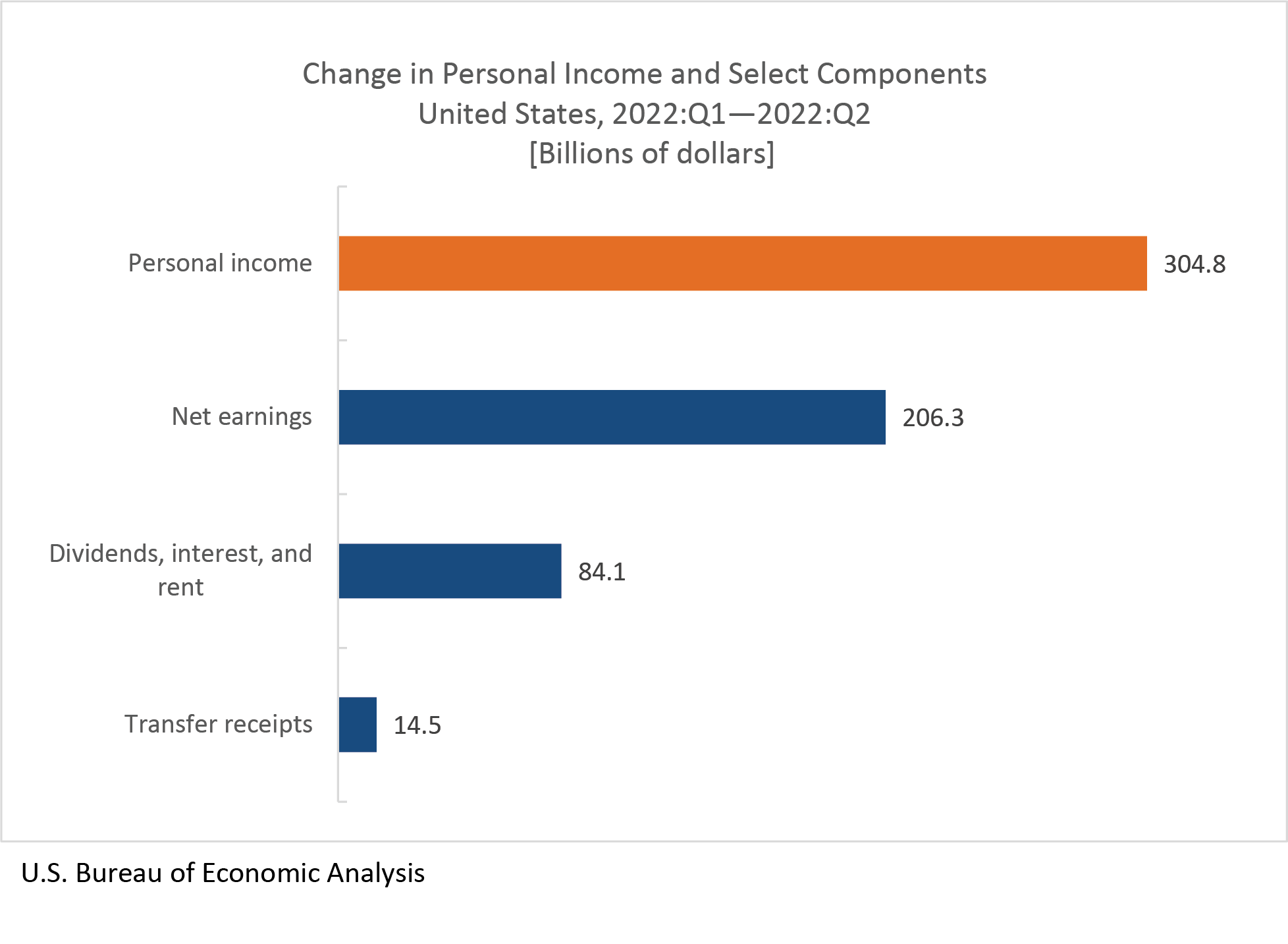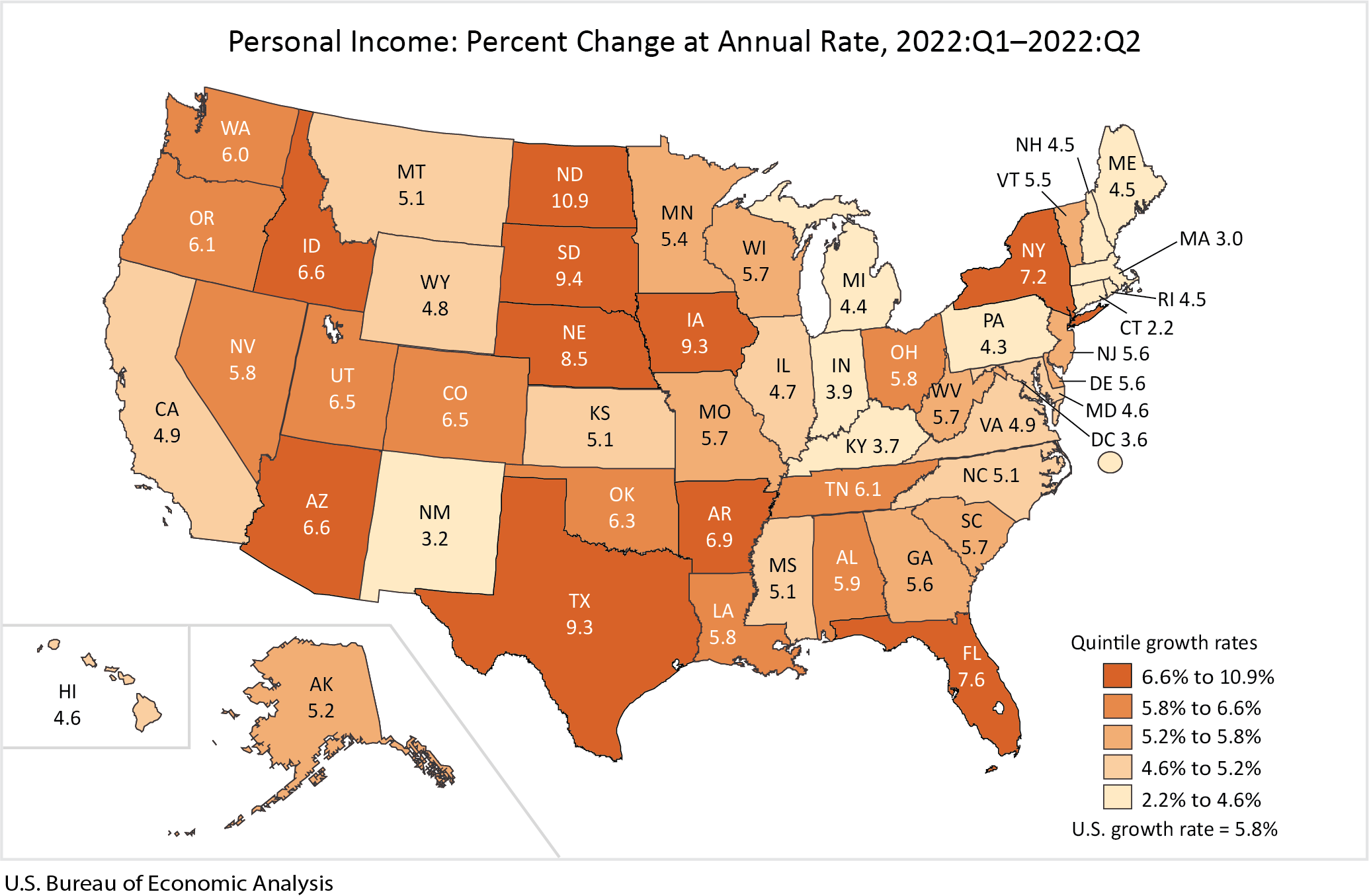News Release
Gross Domestic Product by State and Personal Income by State, 2nd Quarter 2022
Real gross domestic product (GDP) decreased in 40 states and the District of Columbia in the second quarter of 2022, with the percent change in real GDP ranging from 1.8 percent in Texas to –4.8 percent in Wyoming (table 1), according to statistics released today by the U.S. Bureau of Economic Analysis (BEA).
Current-dollar GDP increased in all 50 states and the District of Columbia in the second quarter, with the percent change ranging from 30.5 percent in North Dakota to 0.7 percent in Connecticut.
Personal income increased in all 50 states and the District of Columbia in the second quarter, with the percent change ranging from 10.9 percent in North Dakota to 2.2 percent in Connecticut (table 3).
Today marks the first time BEA has published quarterly statistics for state GDP and state personal income together, providing a fuller picture of state economies. BEA will now produce a single news release for state GDP and personal income each quarter, ending the publication of two separate releases on different days.
GDP
In the second quarter of 2022, as real GDP for the nation decreased at an annual rate of 0.6 percent, real GDP decreased in 8 of the 23 industry groups for which BEA prepares quarterly state estimates (table 2). Construction; nondurable-goods manufacturing; and wholesale trade were the leading contributors to the decrease in real GDP nationally.
- The construction industry was the leading contributor to the decrease in Wyoming, the state with the largest decrease at 4.8 percent, and in 10 other states.
- The finance and insurance industry was the leading contributor to the decrease in Connecticut, the state with the second-largest decrease at 4.7 percent, and in one other state.
- The durable-goods manufacturing industry was the leading contributor to the decrease in Indiana, the state with the third-largest decrease at 3.3 percent, and in two other states.
- The mining industry was the leading contributor to the 1.8 percent increase in Texas, the state with the largest increase in real GDP.
Personal income
In the second quarter of 2022, state personal income increased at an annual rate of 5.8 percent across all 50 states and the District of Columbia. Increases in earnings and property income (dividends, interest, and rent) contributed to personal income growth in all states and the District of Columbia, while transfer receipts increased in 35 states (table 4).
Earnings increased in all states and the District of Columbia, increasing 6.3 percent nationally in the second quarter (table 4). The percent change in earnings ranged from 14.1 percent in North Dakota to 2.1 percent in Connecticut.
Earnings increased in 19 of the 24 industries for which BEA prepares quarterly estimates (table 6). Professional, scientific, and technical services; health care and social assistance; and farms were the leading contributors to the overall growth in earnings.
- In North Dakota and South Dakota, the states with the largest and second-largest increases in personal income, increases in earnings in farms was the leading contributor to the increase in personal income in the second quarter (table 5).
- In Texas, the state with the third-largest increase in personal income, the increase in earnings in mining was the leading contributor.
Property income increased in all states and the District of Columbia, increasing 8.7 percent nationally. The percent change ranged from 12.9 percent in Idaho to 4.8 percent in Kansas (table 4).
Transfer receipts increased in 35 states, increasing 1.5 percent nationally. The percent change in transfer receipts ranged from 10.4 percent in New York to –4.1 percent in Massachusetts.
Annual Update of State Statistics
The estimates for the second quarter of 2022 incorporate the results of BEA's annual updates of GDP by state and personal income by state that were also released today. The annual estimates of GDP by state and personal income by state for 2017 to 2021 and quarterly estimates of GDP by state and personal income by state for the first quarter of 2017 through the first quarter of 2022 were revised. The updates incorporate new and revised source data that are more complete and more detailed than previously available, updates to seasonal factors, and the results of the September 2022 annual updates of the National Income and Product Accounts and GDP by industry statistics. Our online journal, the Survey of Current Business, will contain an article in November describing the results.
BEA also released new estimates of per capita personal income for the second quarter of 2022, along with revised estimates for the first quarter of 2017 through the first quarter of 2022 and annual estimates for 2017 through 2021. BEA used U.S. Census Bureau (Census) population figures to calculate per capita personal income estimates for the second quarter of 2020 through the second quarter of 2022 and for annual 2020 and 2021 per capita personal income estimates. For earlier estimates, BEA continues to use intercensal population statistics that it developed based on Census' methodology. See Note on Per Capita Personal Income and Population.
Next release: December 23, 2022, 10:00 a.m. EST
Gross Domestic Product and Personal Income by State, 3rd Quarter 2022


